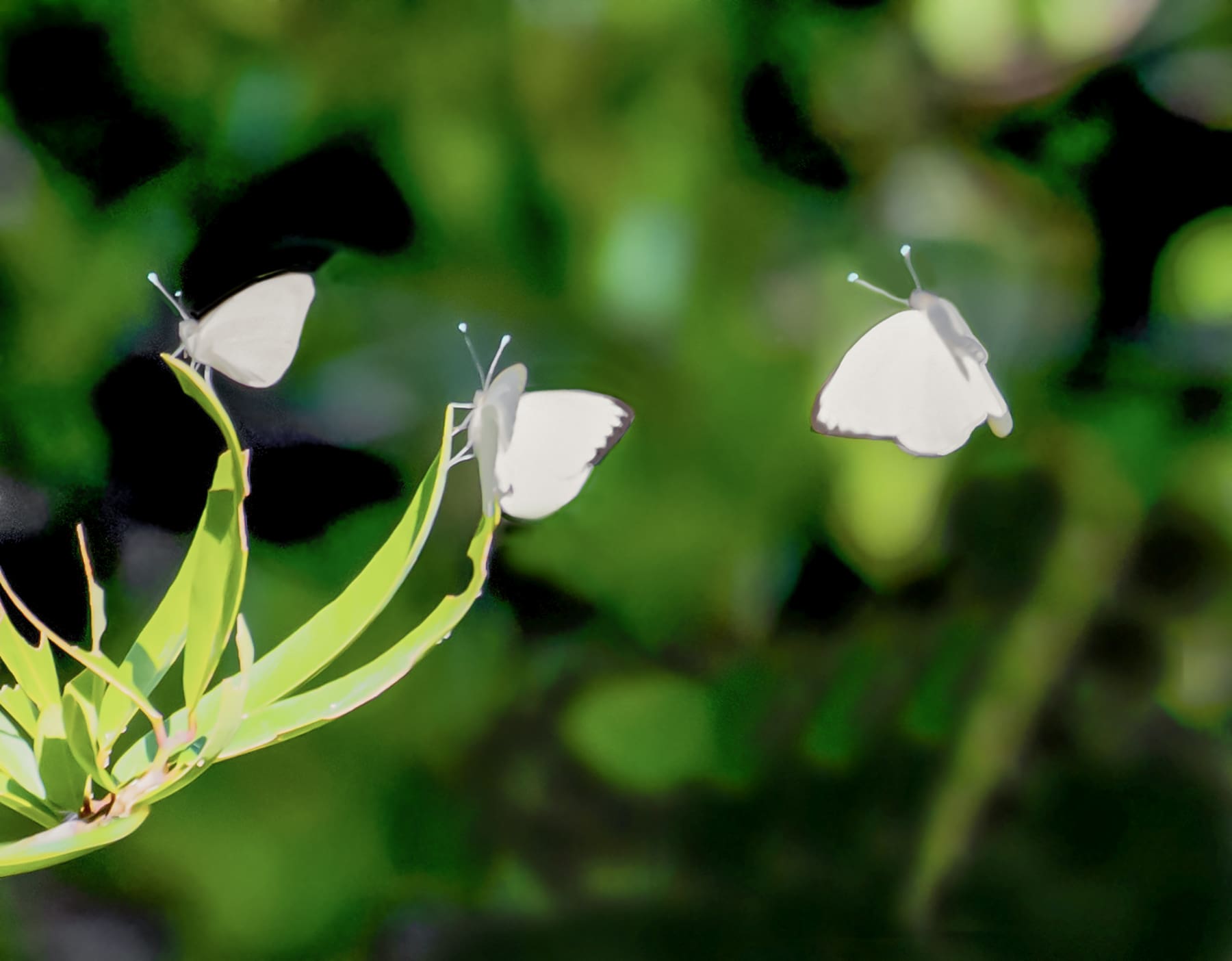
Although some years there are hardly any butterflies, this November, there have been hundreds of Great Southern Whites fluttering around my house. They aren’t all white though. You can see dark wing edges on the top side, and the underside wings tend to be different shades of yellow.
Some people say they feel like they are walking around in a Disney movie when the butterflies swoop around, and up close the butterflies’ faces do look a bit like cartoon characters.
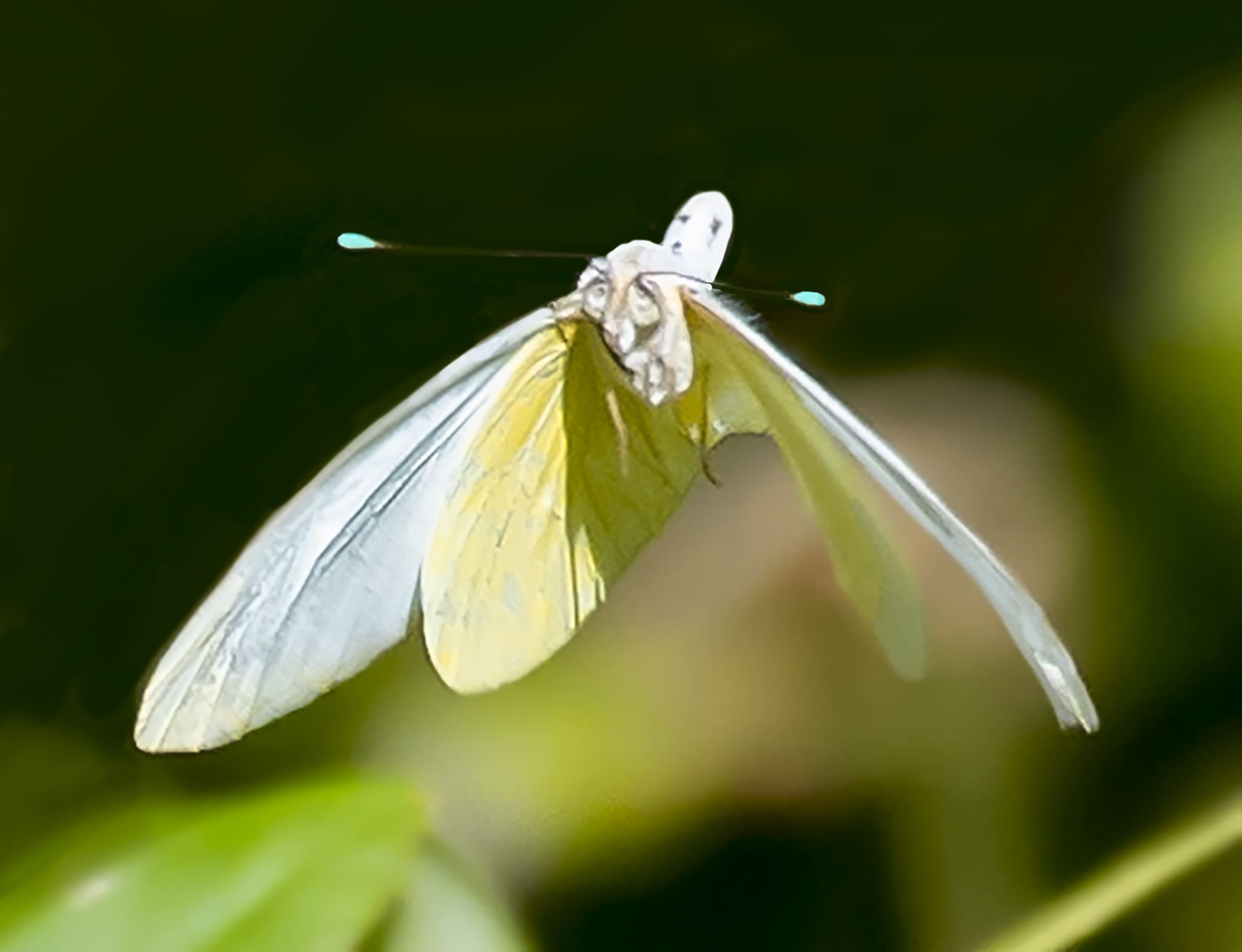
Where do they all come from? It seems like a miracle when they show up and of course in some ways it is. This year I have been trying to learn more about what’s going on with them.
At times you can see them over water, and there are some types of Great Southern White butterflies that do actually migrate, at least for short distances. However, the ones here – Ascia munuste eubotea – are homegrown and not migratory. But they are definitely seasonal.
Many insects have seasonal cycles of activity and then seem to disappear when environmental conditions are unfavorable – like when the weather turns cold up north. In the islands, it is the dry season that makes life difficult for insects, and some have learned to wait out the droughts in various stages of development.
In the case of these white butterflies, it seems that their eggs go into a kind of dormancy called diapause during the dry season, and then revive and hatch when there is lots of rain again. That’s when many of the plants enjoy rapid growth spurts as well, and some plants and trees will also put out flowers as part of their own reproductive cycles. Those flowers provide nectar that feeds the new butterflies, while the butterflies in turn provide pollination services for the plants. Synchronization makes the ecological system work.
One of the main host plants for Great Southern White butterflies in the Virgin Islands is the native Limber Caper. Host plants often have chemicals in their leaves that make the caterpillars and butterflies unpalatable to predators.
When I went out searching in the yard, sure enough, I found little patches of tiny yellow eggs on the tops of some of the limber caper leaves.
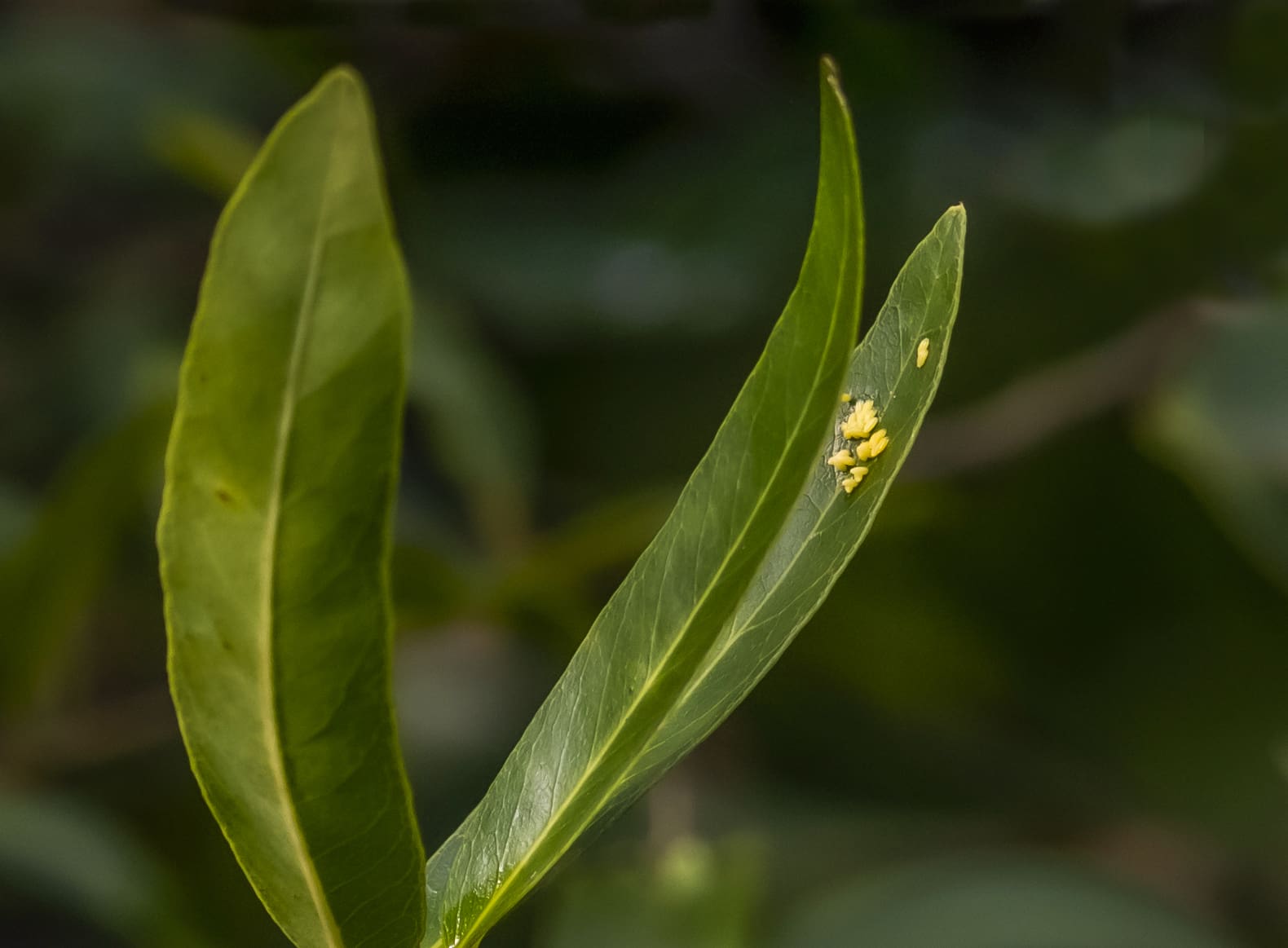
When the eggs hatch, the caterpillars eat the leaves. If there are enough leaves on the plant, the caterpillars thrive, and the host plant is not significantly harmed.
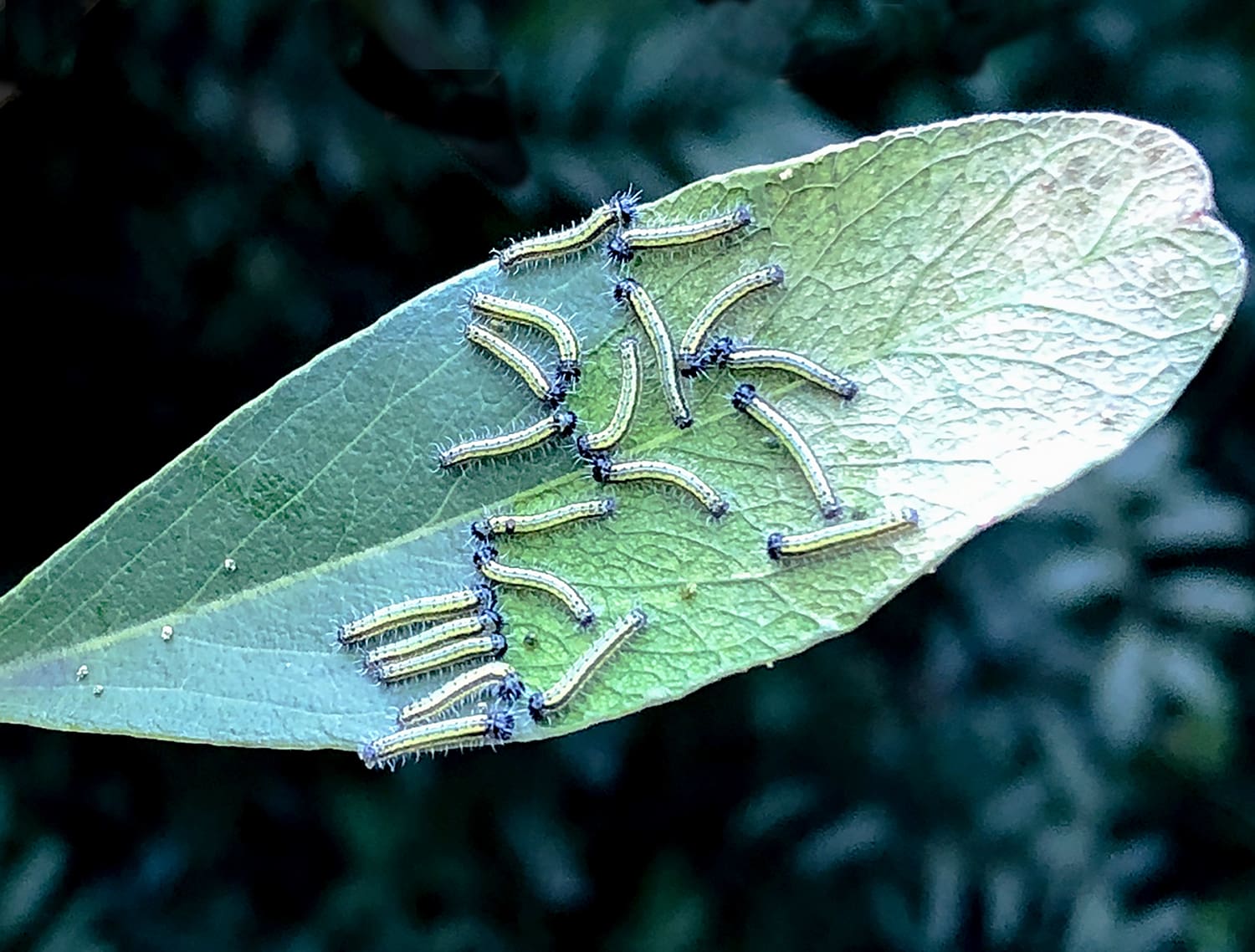
Some of the limber capers did seem to be overloaded with caterpillars and chewed up leaves, while others were relatively untouched.
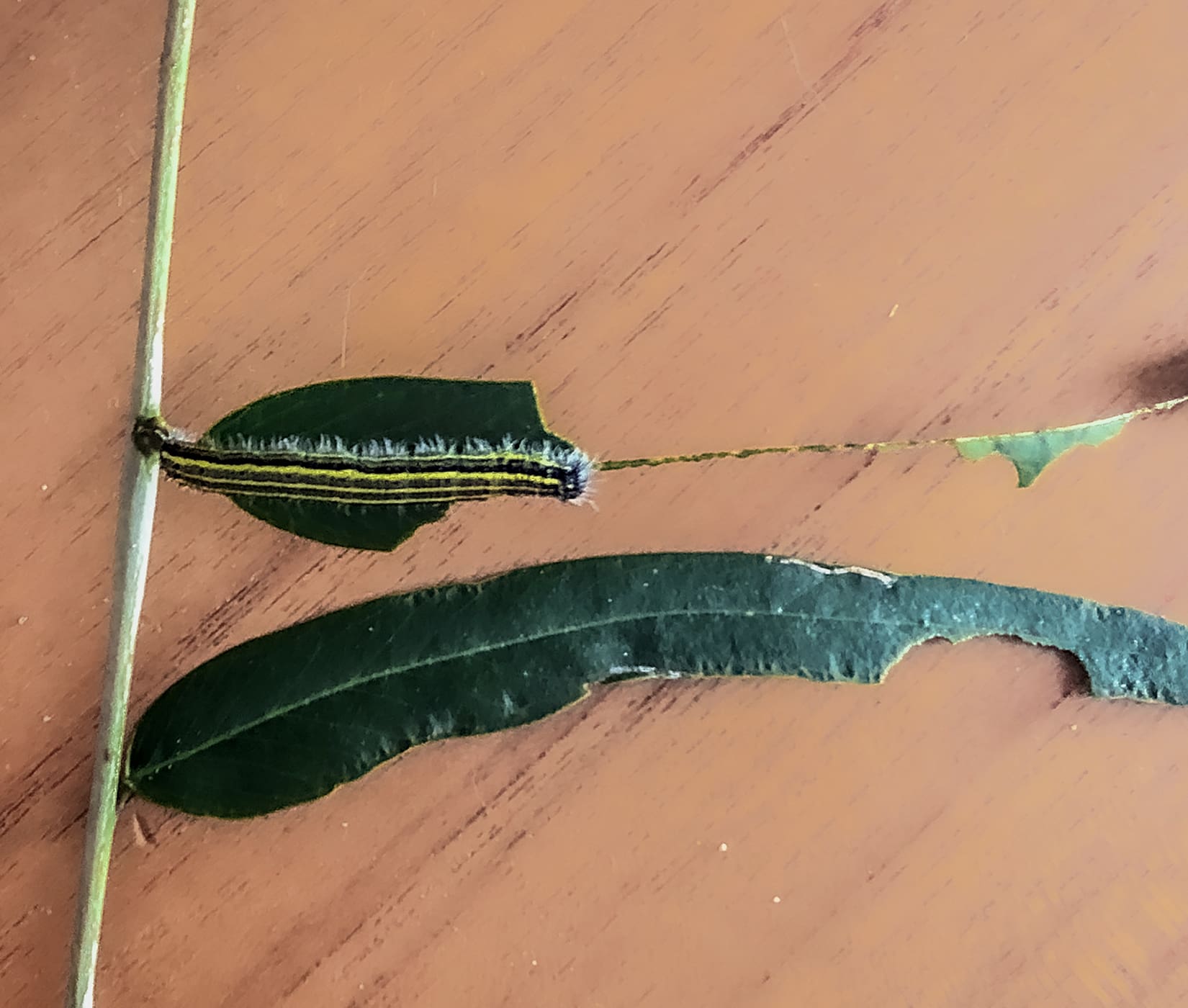
I brought one of the bigger caterpillars inside to see what it would look like when it turned into its pupa stage. I thought that with all those butterflies around there would be a whole bunch of pupa cases outside, but I only found one empty case hanging on the underside of a leaf.
The caterpillar I brought inside was soon done eating limber caper leaves and wasted no time starting to transform into a pupa.
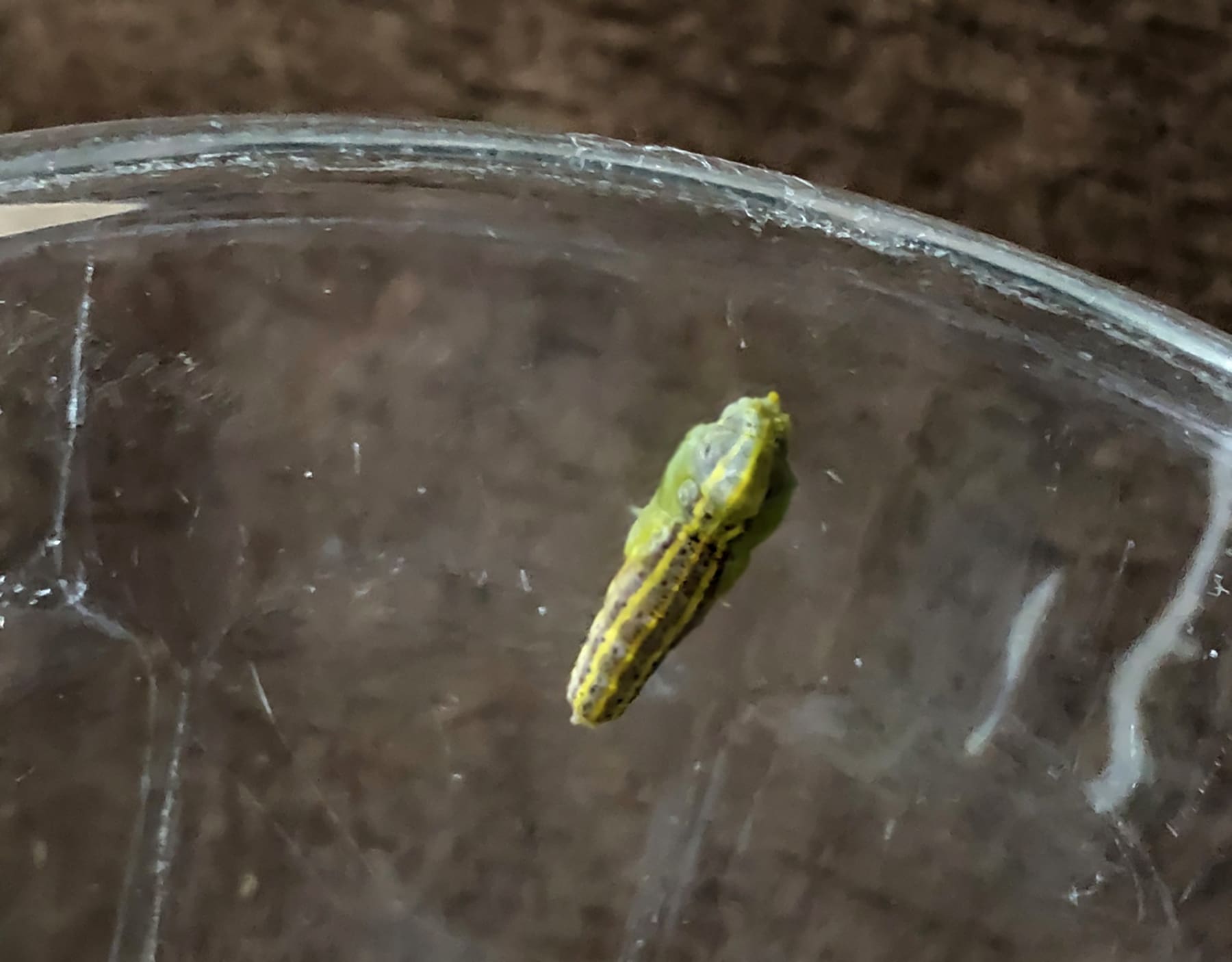
Then about 10 days later a new butterfly emerged – with just a few days to fly around in the sunshine, drink nectar, find a mate, and produce new eggs.
The only times these butterflies sit still for more than a few seconds is when they gather to drink from puddles or wet areas. Then when they get close, sometimes one thing leads to another, and the cycle of life continues. Until the days get dry again.
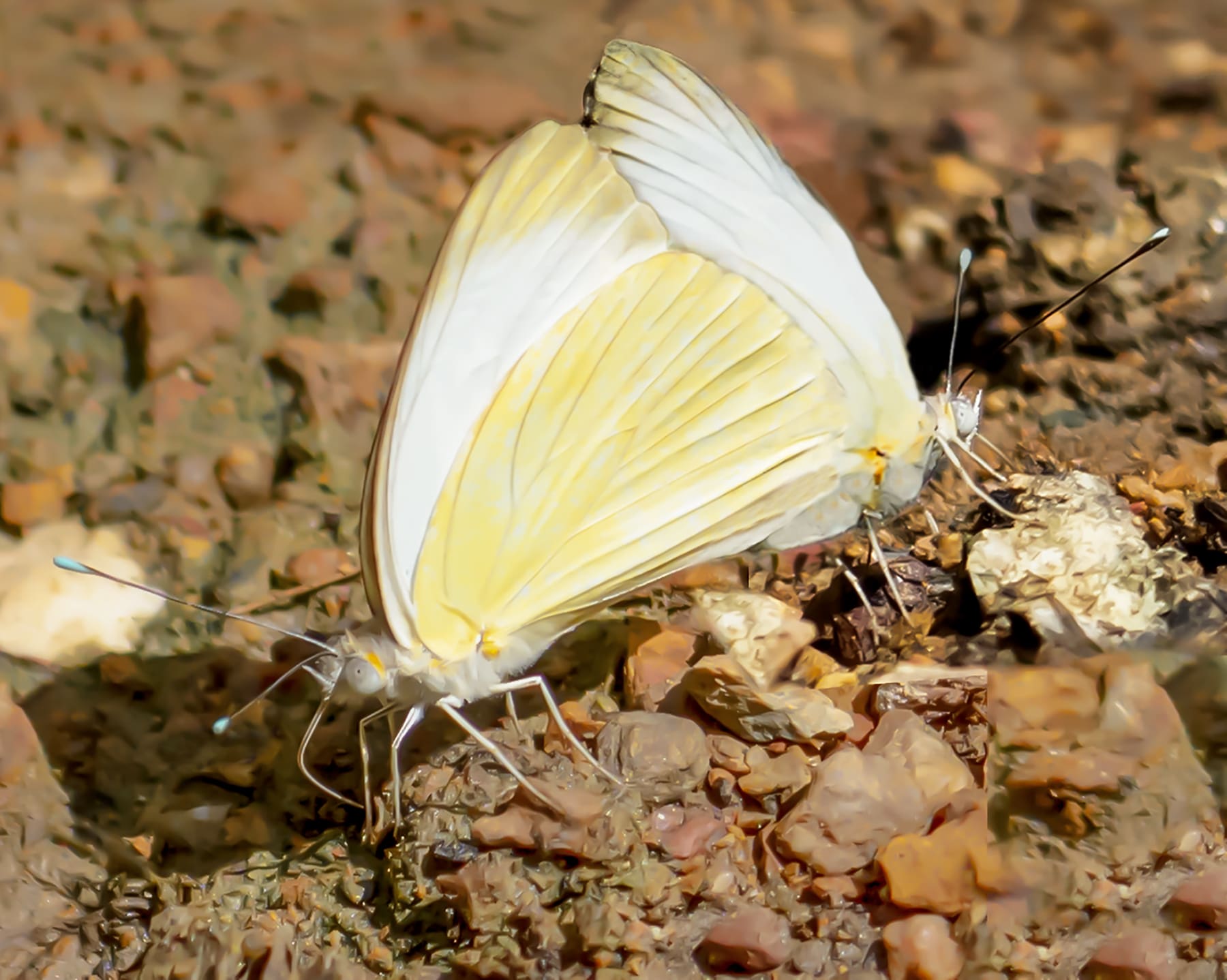
When the rainy season has passed, there seems to be a point at which the butterflies producing eggs receive an environmental signal, and release neurohormones that somehow initiate the diapause in the eggs they lay. Those eggs will be resistant to desiccation, and will wait quietly until the next rainy season arrives before springing into action.
The process really does seem miraculous.
Gail Karlsson is an environmental lawyer, writer and photographer. She is the author of two books about the Virgin Islands – The Wild Life in an Island House, and the guidebook Learning About Trees and Plants – A Project of the Unitarian Universalist Fellowship of St. John. She has also recently published A Birds’ Guide to The Battery and New York Harbor. Follow her on Instagram @gailkarlsson and gvkarlsson.blogspot.com.





